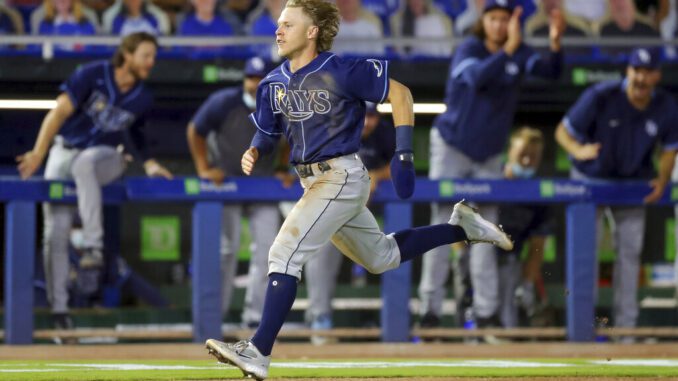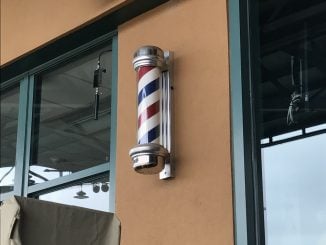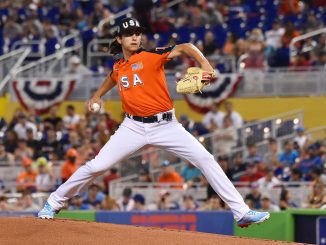
DURHAM — Baseball is different from most sports because it’s every day. It’s a game of routine, where keeping an even keel is essential.
All summer, no matter how well or poorly a player does in a game, he needs to be aware that there’s another one tomorrow.
Except when there isn’t.
For thousands of minor leaguers, last season was the first time since their early childhood that they didn’t spend their summer playing out a schedule at some level of organized baseball.
“I looked at it as being a time in my life, an experience that I was never going to get again,” said Bulls manager Brady Williams. “I just decided to embrace it.”
Williams had been a player, coach or manager at the professional level since 1999, and a college, high school and little league player for years before that. For the first time, last March through June, he didn’t have a game to get to — today, tomorrow or for the foreseeable future.
“Normally, I’m not home in the summer,” he said, “So I spent a lot of days in the pool with the boys, a lot of cooking out. A lot of honey-do list items.”
Like most of us, he also put in a lot of time on Zoom.
“We did a bunch of calls within the organization as far as how you do things and trying to improve on how you do things,” he said. “I made phone calls once a week to about 16 players, just to check in on them, to see what they’re doing, how they’re doing, how they’re holding up.”
Williams had been in the Rays organization since 2006 and worked his way up to Triple-A Durham in 2019. But he was deliberately given a list of players to talk to that hadn’t played for him.
“I was calling players that were in rookie ball and A-ball,” he said. “So I got to know more of the organization through the phone. That was by design. Every manager had a different set of players. Blake Butera in (Low-A) Charleston would be calling some of the older players throughout the organization.”
Williams’ summer vacation came to an end on July 22 when he reported to Tampa, two days before the start of the abbreviated MLB season. He spent the first homestand with the Rays, then reported to the alternate site in Port Charlotte, Florida, where five dozen minor league prospects stood by, ready to step in if the big club had injuries or an outbreak.
Of course, there are hundreds of players in the Rays organization, but only 60 were invited to the alternate site. That left the majority of the Tampa minor leaguers like the rest of us — at home, trying to stay busy.
“I was working out in the morning, giving lessons at night,” said catcher Joey Roach, who didn’t go to Port Charlotte. “I was helping to coach a little 11-year-old team. I did some jobs — landscaping, handyman work.”
The Rays are known for their embrace of data analytics, so it would be easy to assume the Tampa front office had ways of tracking the launch angle and exit velocity of every swing a batter took at home.
Since the shutdown sprung itself on everyone, however, the team didn’t have time to prepare.
“I actually left all my stuff in Port Charlotte,” Roach said. “They called us in and said, ‘Hey, a pandemic is coming. We don’t think it’ll last very long.’ I took my glove and a couple bats with me. Left my clothes, my jerseys, the rest of my equipment. I didn’t get it back until (the start of 2021 spring training) February.”
As a result, the players not at the site were left to do what they could.
“You do what you can baseball-wise,” Roach said. “A lot of guys left to play in some Indy Ball leagues to get some at-bats. But I just did some things at the house — running, pushups, exercises, splitting logs.”
In addition to regular check-ins from the minor league manager assigned to him, Roach had other meetings.
“We had a lot of Zoom calls with the team,” he said. “The catchers would do one a week. The trainers would call once or twice a week to see how we were doing, if we had any injuries or symptoms, how our families were.”
Meanwhile, in Port Charlotte, the Rays faced multiple challenges. The players chosen for the alt site needed to get back into shape after several months of staying at home. The 60 players and all the staff members were tasked with keeping everyone ready in case the Rays needed someone — but how?
“The first part of it felt like the start of spring training,” said current Bulls outfielder Josh Lowe, who was one of the 60. “We called it Spring Training 2.0. They’d told us what they wanted us to do at home, but it was hard for them to tell us for sure what to do because they didn’t have a timetable. So it was getting started all over again, playing catch, taking batting practice on the field, then against live pitching. We did a few weeks of that.”
Then the real alternate site work started. Coaches had to keep the players in game shape but minimize the risk of injury. And for players used to having standings to track and stat lines that appeared on the scoreboard each at-bat or appearance, there was the challenge of keeping everyone motivated.
“We tried to make it as fun and as competitive as we could, daily,” Williams said. “We played some simulated games probably three times a week, and those games were four-on-four, sometimes six-on-six.”
To make up for the missing fielders, the coaches would often grab a glove.
“We were playing defense,” Williams said. “I would play third. (Rays hitting coordinator) Dan DeMent was playing second. (Outfield and baserunning coordinator) Chris Prieto was playing outfield. (Catching coordinator) Tomas Francisco was playing first. We just tried to make it as realistic as we could so the players got something out of it.”
Lowe said the scrimmages were usually three to five innings and occurred right in the heat of the day. “Being in Port Charlotte, being as hot as you can be, 90 to 95 degrees every single day,” he said.
The players reported at 10:30 to 11 in the morning and their on-field day was wrapped up by 2:30 or 3.
On the days when players didn’t have a game, or in the hours of downtime, they worked on individual skills.
“You’re in this different mode,” Williams said. “You’re kind of in the offseason get-better mode, so you can tinker with a lot of things. I think about Taylor Walls and what he and Dan DeMent did with focusing on hitting the ball and driving it more, and it just so happens we told him last month he was going to the major leagues.”
Lowe agreed.
“I think it was a time to improve on your game, specifically,” he said. “Being able to get at-bats off of top-notch pitchers.
“We were just thankful that we were able to go out and be playing baseball amidst everything that was going on,” he continued. “The best part was being out there with the guys when we knew a lot of our friends and teammates were home. We didn’t take that for granted one day, at all. It was always go to the field and get something out of it.”




